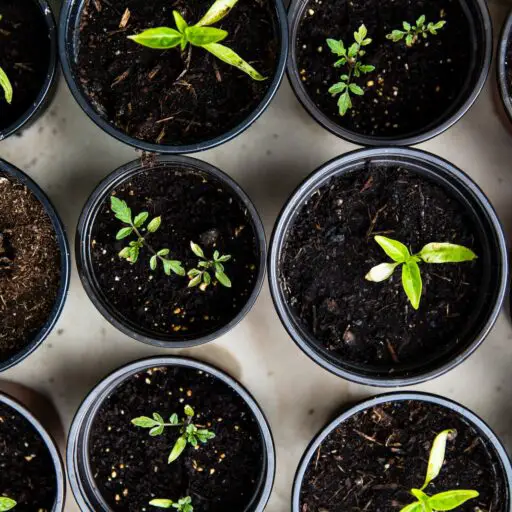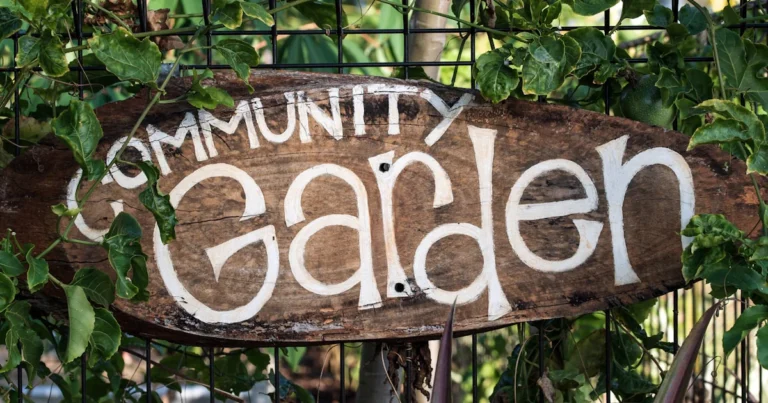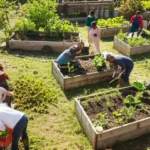Support our educational content for free when you purchase through links on our site. Learn more
Have you ever stumbled upon a lush, green oasis tucked between city buildings and wondered, “What exactly is going on here?” That’s the magic of a community garden—a shared patch of earth where neighbors grow food, flowers, and friendships. But community gardens are far more than just pretty plots; they’re powerful engines of health, connection, and sustainability.
Did you know that nearly half of American adults support policies encouraging community gardens? Or that participating in one can significantly boost your mental well-being and access to fresh produce? In this article, we’ll dig deep into what community gardens really are, explore seven surprising benefits, and guide you step-by-step on how to find or start your own green haven. Plus, we’ll share inspiring success stories and expert tips from our team at Community Gardening™ that you won’t want to miss!
Key Takeaways
- Community gardens are shared spaces where people grow food and build community, offering both individual plots and communal growing models.
- They provide major benefits including improved mental health, stronger social ties, environmental stewardship, and increased access to fresh, healthy food.
- Starting or joining a community garden is easier than you think—with clear steps for finding land, securing permissions, and building a thriving garden community.
- Sustainable practices like composting, water conservation, and organic pest control make community gardens eco-friendly urban oases.
- Legal and liability considerations are essential for a safe, lasting garden—think land agreements, gardener contracts, and insurance.
- Top-quality tools from trusted brands like Fiskars, Felco, and Gardena can make your gardening experience smoother and more enjoyable.
Ready to get growing? Check out our recommended garden tools and supplies to gear up:
- 👉 Shop Fiskars Garden Tools: Amazon | Fiskars Official Website
- Felco Pruners: Amazon | Felco Official Website
- Gardena Watering Supplies: Amazon | Gardena Official Website
Table of Contents
- ⚡️ Quick Tips and Facts: Your Fast Track to Community Garden Wisdom!
- 🕰️ From Victory Gardens to Vibrant Hubs: The Rich History of Community Gardening
- 🌱 What Exactly Is a Community Garden? Unearthing the Core Concept
- 🌟 Why Dig In? The Myriad Benefits of Community Gardening for You & Your Neighborhood
- 🗺️ Types of Community Gardens: Finding Your Perfect Patch of Paradise
- 1. 🏡 Allotment Gardens: Your Own Private Plot
- 2. 🤝 Communal Gardens: Sharing the Harvest & the Workload
- 3. 🏫 School Gardens: Growing Minds & Green Thumbs Together
- 4. 💚 Therapeutic Gardens: Healing Through Horticulture
- 5. 🏙️ Urban Farms & Market Gardens: Scaling Up for Impact
- 6. 🌿 Specialty Gardens: From Pollinator Havens to Herb Sanctuaries
- 🚀 Ready to Grow? How to Start or Join a Community Garden Adventure
- 🚧 Common Challenges & How to Cultivate Solutions: We’ve Been There!
- 🛠️ Essential Tools & Supplies for Your Community Plot: Gear Up, Gardeners!
- 🔗 Beyond the Harvest: Building Stronger Community Bonds & Social Fabric
- ♻️ Sustainable Practices in Community Gardening: Nurturing Our Planet, One Plot at a Time
- 🛡️ Legal & Liability Considerations: Keeping Your Garden Green & Safe (and Insured!)
- 🏆 Inspiring Success Stories: Where Seeds of Hope Blossom into Bountiful Realities
- 💖 Conclusion: The Ever-Growing Impact of Community Gardens on Our Lives
- 🌐 Recommended Links: Dig Deeper into the World of Community Gardening!
- 🤔 FAQ: Your Burning Community Garden Questions Answered (Finally!)
- 🔗 Reference Links: Our Trusted Sources of Wisdom & Inspiration
Here at Community Gardening™, we’ve got dirt under our fingernails and a whole lot of love for what happens when people grow food together. You’ve probably heard the term “community garden” floating around, maybe seen a vibrant, green patch in a concrete-heavy neighborhood and wondered, “What’s the deal with that?” Is it just a bunch of people who can’t fit a tomato plant on their balcony? Or is it something more?
Oh, it’s so much more.
We’re here to pull back the curtain (or the climbing bean vines, as it were) and give you the complete scoop. We’ll dig into what a community garden is, why you should absolutely join one, and how these shared spaces are transforming neighborhoods from the ground up. So grab your trowel and a cup of tea, and let’s get to the root of it!
⚡️ Quick Tips and Facts: Your Fast Track to Community Garden Wisdom!
Pressed for time? We get it. Here’s the soil-free summary to get you up to speed in seconds.
| Factoid | The Juicy Details |
|---|---|
| What is it? | A plot of land gardened by a group of people. As the U.S. Department of Agriculture puts it, they are simply “spaces where people come together to grow food.” |
| Health Boost 💪 | Participants eat more fruits and veggies! Studies have shown community gardening can lead to a lower Body Mass Index (BMI) and reduced rates of obesity. One 2013 study found 23% of overweight children achieved a normal BMI after just seven weeks in a garden program. |
| Mental Zen 🧘♀️ | It’s not just about the veggies. Gardening is linked to reduced stress, enhanced mood, and improved overall mental health. It’s dirt therapy, and it’s incredibly effective! |
| Community Glue 🤝 | These gardens are powerful social hubs. They combat loneliness and isolation by creating strong social networks and a shared sense of purpose. |
| Eco-Warriors 🦋 | Gardens reduce “food miles” by providing ultra-local produce, create green space that cools cities, and boost biodiversity by providing habitats for pollinators. |
| Strong Support ✅ | You’re not alone in loving this idea! A whopping 47.2% of American adults support policies that encourage the creation of community gardens, according to a study published in the Journal of Public Health. |
In short, community gardens are one of the best multi-tools for building healthier, happier, and more connected communities. To learn more, check out our deep dive into the Benefits of Community Gardens.
🕰️ From Victory Gardens to Vibrant Hubs: The Rich History of Community Gardening
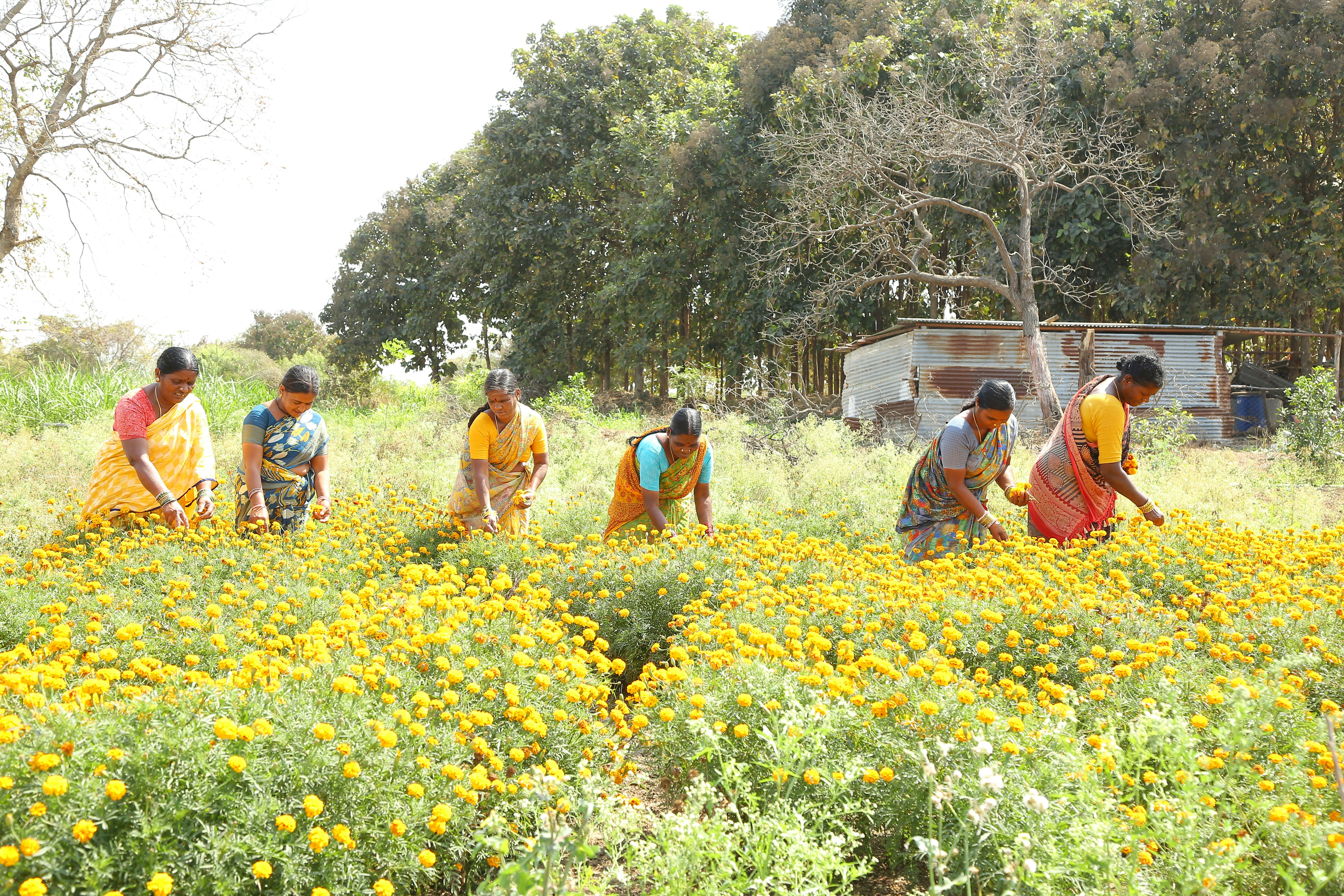
Think community gardens are a trendy new fad? Think again! The roots of this movement run deep, twisting through history in response to major social and economic shifts.
The idea isn’t new, but it’s had a few major growth spurts. The first wave, as noted by Wikipedia’s excellent historical overview, popped up during the Industrial Revolution, giving urban workers a green escape and a way to supplement their diets.
Then came the World Wars, and with them, the iconic “Victory Gardens” (or “Liberty Gardens” in WWI). These weren’t just about food; they were a patriotic act. Citizens on the home front were encouraged to plant gardens to support the war effort, reducing the strain on the public food supply. It was a massive, collective effort that produced a staggering amount of food.
The movement went a bit dormant after the wars but came roaring back in the 1970s. Fueled by environmental concerns and economic anxieties like the oil crisis, people once again turned to the land. This “third wave” was a grassroots effort, with neighbors taking over vacant lots and transforming them into productive green spaces, often as a direct response to food insecurity.
Today, we’re in another major resurgence. Faced with climate change, supply chain worries, and a deep-seated desire to reconnect with our food and our neighbors, community gardens are blossoming everywhere—from rooftops in Japan to sprawling plots in Spain and over 2,000 gardens in Singapore as part of their ‘Community in Bloom’ initiative. They are a modern solution to some of our oldest problems.
🌱 What Exactly Is a Community Garden? Unearthing the Core Concept
Alright, let’s break it down. At its heart, a community garden is a beautiful, simple concept: a single piece of land shared by many hands.
Imagine a potluck dinner. Everyone brings a different dish to share, creating a diverse and wonderful feast. A community garden is like a potluck of plots. It’s a shared space where individuals and families come together to cultivate plants, whether for food, flowers, or just for the joy of it.
As Wikipedia puts it, it’s “any piece of land gardened by a group of people.” But within that simple definition, there are a couple of key models you’ll find.
The Two Main Flavors of Community Gardens
| Feature | Allotment Gardens (Individual Plots) | Communal Gardens (Collective Plots) |
|---|---|---|
| Structure | The land is divided into individual plots, usually rented for a small annual fee. | The entire garden is worked as one large plot by all members. |
| Responsibility | ✅ You are the king or queen of your plot! You decide what to plant, and you do the weeding and watering. | 🤝 Everyone works together on all tasks, from planting to harvesting. |
| The Harvest | 🥕 You keep everything you grow in your personal plot. | 🍅 The harvest is shared among all the members, or sometimes donated to a local food bank. |
| Best For… | Gardeners who want control over their own space and produce. | People who love teamwork and want a more social, collaborative experience. |
No matter the model, the core idea remains the same: it’s about shared space, shared resources (like water and tools), and a shared passion for growing. It’s a space that is, as Productive Parks notes, often established on “underused public land” or private land through an agreement, turning a forgotten corner into a thriving hub.
🌟 Why Dig In? The Myriad Benefits of Community Gardening for You & Your Neighborhood
So, why are we at Community Gardening™ so obsessed with these spaces? Because the benefits are staggering! It’s not just about growing a tastier tomato (though that’s a fantastic perk). It’s about cultivating a better life and a stronger community.
1. 🧘♀️ Personal Well-being & Mental Health Oasis
Let’s be real: modern life is stressful. A community garden is a powerful antidote. The simple act of plunging your hands into the soil, of focusing on the needs of a tiny seedling, is incredibly grounding. Research backs this up, showing that gardening is associated with reduced stress and an enhanced mood. It’s a form of active meditation that gets you outside, breathing fresh air, and moving your body. Plus, the light physical exercise is a fantastic, low-impact way to stay active.
2. 🤗 Cultivating Community & Forging Friendships
This is the “community” part, and it’s huge. In an increasingly digital and isolated world, these gardens are vital social spaces. You’ll meet neighbors you never knew you had, swapping planting tips one minute and life stories the next.
I’ll never forget the time at our flagship garden when Maria, a recent retiree, was struggling with her squash plants. Along came David, a young tech worker, who showed her a simple trick for hand-pollinating them. A week later, Maria brought him a freshly baked zucchini bread. That’s the magic—it’s about growing connections, not just crops. These gardens combat alienation by creating real, tangible social networks.
3. 🦋 Environmental Stewardship & Boosting Biodiversity
Community gardens are little eco-powerhouses. They:
- Reduce Food Miles: The distance from plot to plate is often just a few hundred feet, drastically cutting down on the fossil fuels needed for transportation.
- Cool Our Cities: Green spaces help combat the “urban heat-island effect,” where concrete and asphalt make cities significantly hotter than surrounding rural areas.
- Create Habitats: They become havens for bees, butterflies, birds, and other beneficial insects, boosting local biodiversity.
- Promote Recycling: Most gardens have robust composting systems, turning kitchen scraps and yard waste into “black gold” for the soil, diverting tons of waste from landfills.
4. 🍎 Food Security & Access to Fresh, Healthy Produce
For many, this is the most critical benefit. Community gardens provide access to fresh, affordable, and nutritious food, especially in neighborhoods known as “food deserts” (a term many now replace with “food apartheid” to highlight the systemic nature of the issue). When you can grow your own food, you have control over what you eat and what goes into it. Studies consistently show that households involved in community gardening increase their consumption of fruits and vegetables. It’s a direct path to a healthier diet, full of delicious Edible Plants.
5. 📚 Educational Opportunities & Hands-On Skill Building
A community garden is a living classroom. New gardeners learn from seasoned experts. Kids learn where their food really comes from (spoiler: not the supermarket). It’s a place for hands-on, intergenerational learning about botany, ecology, cooking, and patience. Many gardens host workshops on topics like seed saving, canning, or building raised beds, empowering everyone with valuable, lifelong skills.
🗺️ Types of Community Gardens: Finding Your Perfect Patch of Paradise
Community gardens aren’t a one-size-fits-all deal. They come in many shapes and sizes, each tailored to the needs of its community. Here are some of the most common types you’ll encounter:
1. 🏡 Allotment Gardens: Your Own Private Plot
This is the classic model. A larger piece of land is divided into individual plots (e.g., 10’x10′ or 10’x20′). You rent your plot for the season and have total freedom to grow what you like within the garden’s rules. It’s the perfect blend of community support and personal space.
2. 🤝 Communal Gardens: Sharing the Harvest & the Workload
In this model, there are no individual plots. Everyone works together on the entire garden, and the harvest is shared among the participants. This is fantastic for building a strong team spirit and is often used for gardens whose primary mission is to donate produce to local food pantries.
3. 🏫 School Gardens: Growing Minds & Green Thumbs Together
Located on school grounds, these are living laboratories for students. They integrate with science, math, and health curricula, teaching kids about nature, nutrition, and responsibility in the most hands-on way imaginable.
4. 💚 Therapeutic Gardens: Healing Through Horticulture
These gardens are designed specifically to support physical and mental health. You’ll find them at hospitals, senior centers, and rehabilitation facilities. They often feature accessible designs, like raised beds and smooth pathways, and focus on sensory experiences to promote healing and well-being.
5. 🏙️ Urban Farms & Market Gardens: Scaling Up for Impact
These are community gardens on a larger scale. They often operate as non-profits or small businesses, growing significant amounts of food to sell at local farmers’ markets or through a CSA (Community Supported Agriculture) program. They are key players in building resilient local food systems.
6. 🌿 Specialty Gardens: From Pollinator Havens to Herb Sanctuaries
Some gardens have a specific focus! You might find a garden dedicated entirely to native plants to support local wildlife, a fragrant herb garden for community use, or a vibrant pollinator garden buzzing with bees and butterflies. These are wonderful examples of creative Garden Design Ideas.
🚀 Ready to Grow? How to Start or Join a Community Garden Adventure
Feeling the itch to get your hands dirty? Fantastic! Here’s how you can jump in, whether you’re looking to join an existing garden or bravely start your own.
📍 Finding an Existing Garden Near You: Your First Sprout!
Joining a garden is the easiest way to start. Here’s your action plan:
- Search Online: Your first stop should be the American Community Gardening Association’s “Find a Garden” tool. It’s a fantastic resource for locating registered gardens in your area.
- Contact Your City: Call your local Parks and Recreation department. They often manage public community gardens or at least have a list of them.
- Ask Around: Talk to people at your local farmers’ market, garden supply store, or neighborhood association. Word-of-mouth is powerful!
- Just Look! Take a walk or bike ride through your neighborhood. You might be surprised to find a thriving garden just around the corner.
Once you find one, reach out to the garden coordinator. Ask if they have open plots, what the fees are, and what the rules are. Most gardens are thrilled to welcome new members!
✨ Starting a New Community Garden from Scratch: A Seed of an Idea!
Feeling ambitious? Starting a garden is a huge but incredibly rewarding project. It’s a marathon, not a sprint.
- Form a Team: Don’t go it alone! Find a few other passionate, dedicated people in your neighborhood to form a steering committee.
- Define Your Vision: What kind of garden will it be? Allotment? Communal? Who is it for? What are your goals?
- Find the Land: This is often the biggest hurdle. Look for vacant lots (public or private), underused park space, or land owned by churches, schools, or businesses.
- Get Permission: Once you have a potential site, you need to secure the rights to use it. This will involve tracking down the owner and likely creating a land-use agreement or lease.
- Plan & Design: How will you lay out the plots? Where will the water source be? What about a tool shed and compost area?
- Build Your Community: Host an informational meeting to recruit gardeners and build excitement.
- Develop Rules & Policies: This is crucial for a smoothly running garden. Create clear guidelines on plot maintenance, fees, water usage, and conflict resolution. Check out our guide on Community Garden Policies for a head start.
📝 Navigating the Green Tape: Permits, Permissions & Practicalities
Yes, there’s paperwork. As the experts at Productive Parks point out, you’ll need to think about gardener agreements, liability waivers, and potentially even insurance. Zoning laws can also be a major factor. Some cities have specific zoning for urban agriculture, while in others, you may have to navigate a more complex process. Don’t be discouraged! Your local city planning department is the best place to start asking questions. Resources like the “Community Garden Toolkit” from ChangeLab Solutions can be an invaluable guide through this process.
🚧 Common Challenges & How to Cultivate Solutions: We’ve Been There!
Running a community garden isn’t always sunshine and sunflowers. We’ve seen it all, and trust us, every garden faces bumps along the way. The key is to anticipate them and have a plan.
🔑 Land Access & Security: Finding Your Forever Home
The Challenge: As Wikipedia rightly states, “Access to land and security of land tenure remains a major challenge for community gardeners worldwide.” Many gardens operate on temporary leases, and the threat of development is always looming.
The Solution:
- Seek long-term leases: When negotiating with landowners, push for a multi-year agreement (3-5 years is great).
- Partner with stable institutions: Churches, schools, and municipalities are often more stable landowners than private developers.
- Explore land trusts: A community land trust can purchase land and hold it in perpetuity for community benefit, providing ultimate security.
💰 Funding & Resources: Keeping the Green Flowing
The Challenge: Water bills, tool replacement, compost delivery—it all costs money. Relying solely on modest plot fees can be tough.
The Solution:
- Diversify funding: Seek out local grants from community foundations or environmental groups.
- Find a sponsor: A local business might be willing to sponsor the garden in exchange for a sign and some good PR.
- Host fundraisers: A plant sale, a harvest festival, or a fundraising dinner can be great for both finances and community spirit.
🗣️ Volunteer Engagement & Conflict Resolution: Nurturing Harmony
The Challenge: A few dedicated people end up doing all the work. Or, disagreements arise over weedy plots, water usage, or “volunteer” vegetables creeping into a neighbor’s space.
The Solution:
- Clear expectations: Your gardener agreement should clearly state any required volunteer hours for common area maintenance.
- Make it fun: Organize scheduled workdays with music and snacks to tackle big projects together.
- Have a process: Establish a clear, simple process for conflict resolution. It could be a designated garden mediator or a committee that hears grievances. The goal is to solve problems early and respectfully.
💧 Water Access & Management: The Lifeblood of Your Garden
The Challenge: A garden needs water, but a reliable, affordable source isn’t always available.
The Solution:
- Location, location, location: When scouting land, proximity to a water source is a top priority.
- Harvest the rain: Install large rain barrels (like those from Good Ideas) to capture runoff from sheds or nearby roofs. It’s free and great for your plants!
- Use soaker hoses and mulch: These are far more efficient than overhead sprinklers, delivering water directly to the roots and reducing evaporation.
🐞 Pest & Disease Control: Natural Solutions for a Thriving Plot
The Challenge: Aphids, squash bugs, and powdery mildew don’t care about your community spirit. Most gardens ban synthetic pesticides, so you need other strategies.
The Solution:
- Promote healthy soil: Healthy, compost-rich soil leads to strong, resilient plants that are less susceptible to pests and disease.
- Encourage beneficial insects: Plant flowers that attract ladybugs, lacewings, and other predatory insects.
- Use physical barriers: Floating row covers can protect crops from many pests.
- Embrace organic solutions: A simple spray of soapy water or neem oil can handle many common pest problems.
🛠️ Essential Tools & Supplies for Your Community Plot: Gear Up, Gardeners!
While some tools are best owned personally (like your favorite gloves), most community gardens have a shared shed with the basics. Having quality tools makes the work more enjoyable and effective. Here’s what we consider essential.
| Tool Category | Must-Haves | Great to Have (Shared) | Top-Notch Brands We Trust |
|---|---|---|---|
| Hand Tools | Trowel, hand fork, hori hori (gardening knife), gloves | Soil scoop, dibber | Fiskars, DeWit, Barebones Living |
| Long-Handled Tools | Round-point shovel, garden rake, hoe | Pitchfork, broadfork | Bully Tools, AMES, Corona |
| Watering | Watering can, spray nozzle for hose | Soaker hoses, drip irrigation system | Gardena, Dramm, Melnor |
| Pruning | Hand pruners (secateurs), snips | Loppers, pruning saw | Felco, ARS, Fiskars |
| Transport | Bucket or garden tub | Wheelbarrow or garden cart | Gorilla Carts, True Temper |
Many gardeners swear by their Felco F-2 pruners—they’re an investment, but they can last a lifetime. For digging, a sturdy Fiskars D-handle shovel is a workhorse. And for all-around weeding and planting, nothing beats the versatility of a good hori hori knife.
❌ A word of caution: Avoid the super-cheap, multi-tool sets. They often bend or break after one season. It’s better to invest in a few high-quality tools that will last.
Ready to gear up? You can find these trusted brands at most garden centers or online.
- 👉 Shop Garden Tools on: Amazon | Walmart
- Fiskars Tools: Amazon | Fiskars Official Website
- Felco Pruners: Amazon | Felco Official Website
- Gardena Watering Supplies: Amazon | Gardena Official Website
🔗 Beyond the Harvest: Building Stronger Community Bonds & Social Fabric
The truth is, the most important things grown in a community garden are often not vegetables. They are friendships, trust, and a sense of belonging. The garden becomes what sociologists call a “third place”—a vital hub of community life that isn’t home or work.
It’s where the real magic happens:
- Shared Meals: Potlucks and harvest festivals where everyone brings a dish made with garden produce are a cornerstone of garden culture.
- Skill Swaps: One member might host a workshop on canning tomatoes, while another teaches a class on building a simple trellis. We love organizing these Community Garden Events.
- Informal Support: It’s where you find someone to watch your plot while you’re on vacation, or get a helping hand turning your compost pile.
As one of our favorite quotes from the Wikipedia page on the topic says, gardens “combat two forms of alienation that plague modern urban life: they reconnect urban gardeners with the source of their food and reduce isolation by fostering a sense of community.” It’s about putting the community back into our neighborhoods.
♻️ Sustainable Practices in Community Gardening: Nurturing Our Planet, One Plot at a Time
Community gardens are, by their very nature, champions of sustainability. They are living demonstrations of how to grow food in a way that nurtures the earth instead of depleting it.
Here are the core practices you’ll see in almost every thriving community garden:
- Composting is King: ✅ Every garden should have a robust, multi-bin composting system. It’s the ultimate recycling program, turning food scraps and garden waste into nutrient-rich soil amendment. A tumbler-style composter from a brand like Jora or a large-capacity stationary bin from Gardener’s Supply Company can handle a lot of waste.
- Water Wisely: Water conservation is paramount. This means using thick layers of mulch (straw, wood chips) to retain moisture, watering deeply but infrequently, and prioritizing drip irrigation or soaker hoses over wasteful overhead sprinklers.
- No Nasty Chemicals: ❌ The vast majority of community gardens have a strict no-pesticide, no-herbicide rule. This protects pollinators, soil life, and the health of the gardeners. Instead, we rely on Integrated Pest Management (IPM), companion planting, and physical barriers.
- Building Soil Health: The focus is always on feeding the soil, not just the plants. This means adding compost, using cover crops in the off-season, and avoiding excessive tilling that can damage soil structure.
By embracing these practices, community gardens become more than just places to grow food; they become models of ecological stewardship for the whole neighborhood.
🛡️ Legal & Liability Considerations: Keeping Your Garden Green & Safe (and Insured!)
Okay, let’s talk about the less glamorous but absolutely essential side of community gardening: the legal stuff. It might seem like overkill for a patch of dirt, but getting this right from the start can prevent massive headaches down the road.
Disclaimer: We’re expert gardeners, not lawyers! This is advice based on our experience, not legal counsel. Always consult with a local professional for specific legal questions.
Key Documents Every Garden Needs:
- Land Use Agreement: This is your contract with the landowner (whether it’s the city, a church, or a private citizen). It should specify the length of the lease, what the land can be used for, and who is responsible for things like water bills and major maintenance.
- Gardener’s Agreement/Contract: This is the document every member signs. It lays out the rules of the garden. Think of it as your garden’s constitution. It should cover:
- Plot fees and payment deadlines.
- Plot maintenance standards (e.g., “plots must be kept reasonably free of weeds”).
- Rules on pesticide/herbicide use (usually a ban).
- Volunteer hour requirements.
- Procedures for dealing with abandoned plots.
- Liability Waiver: This is crucial. A waiver, signed by all members, states that they understand the inherent risks of gardening (tripping, tool use, etc.) and agree not to hold the garden organization or landowner responsible for injuries. It’s a fundamental piece of risk management.
To Insure or Not to Insure?
For many small gardens, a strong set of rules and a signed waiver are sufficient. However, if your garden is a registered non-profit, hosts public events, or works with vulnerable populations (like children or seniors), getting general liability insurance is highly recommended. The American Community Gardening Association offers resources and group rates on insurance policies tailored for community gardens. It’s a small price to pay for major peace of mind.
Taking the time to set up these Community Garden Policies creates a safe, fair, and stable environment where everyone can focus on what matters most: gardening!
🏆 Inspiring Success Stories: Where Seeds of Hope Blossom into Bountiful Realities
Sometimes, the best way to understand the power of a community garden is to see it in action. These are more than just plots of land; they are stories of transformation.
Take the Green Guerillas in New York City. They started in the 1970s by throwing “seed bombs” into derelict, trash-filled vacant lots. What began as an act of guerilla gardening has grown into a powerful organization that supports hundreds of community gardens across the city, providing resources, training, and advocacy. They literally turned urban blight into beauty and bounty.
Or consider the Fenway Victory Gardens in Boston. Established during World War II, it’s one of the oldest continuously operating victory gardens in the country. Spanning seven acres, it’s a stunning oasis in the heart of the city, with over 500 plots tended by a diverse group of city dwellers. It’s a living piece of history and a testament to the enduring appeal of community gardening.
Here at Community Gardening™, we helped a neighborhood group in a dense urban area take over a small, paved-over lot that was a magnet for illegal dumping. The first year was tough. We had to bring in truckloads of soil to build raised beds. The water access was a single, leaky spigot a block away. But the gardeners were determined. They organized, fundraised, and built a beautiful, productive space. Today, the “Phoenix Patch,” as they call it, has a waiting list a mile long, hosts a weekly mini-market for residents, and has completely changed the feel of the entire block.
These stories show that with a little bit of soil, a handful of seeds, and a whole lot of community spirit, anything is possible. What forgotten corner of your neighborhood is just waiting for its own seed of hope?
💖 Conclusion: The Ever-Growing Impact of Community Gardens on Our Lives
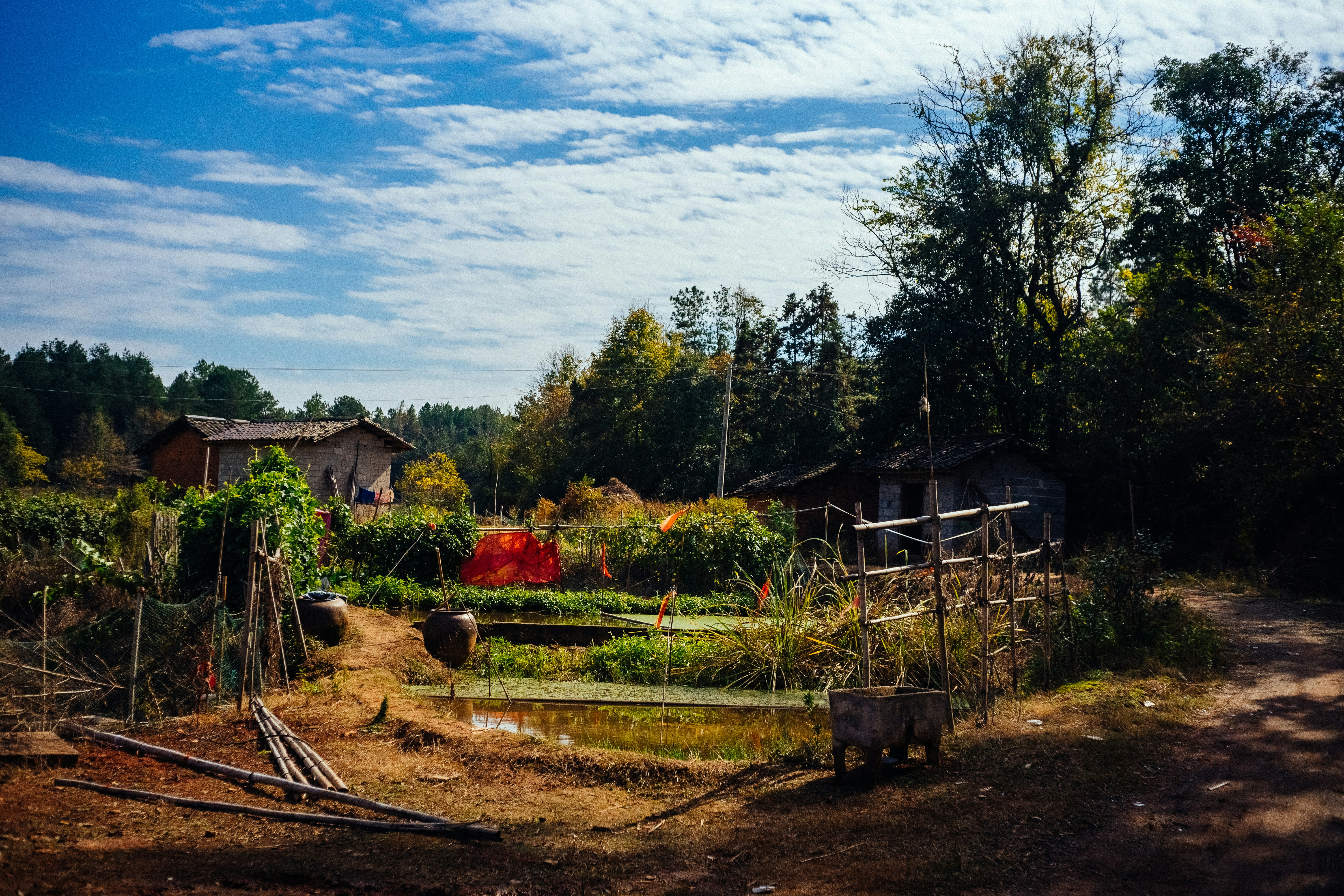
So, what’s the final word on community gardens? They’re not just patches of dirt; they’re vibrant ecosystems of growth—of plants, yes, but more importantly, of people and community spirit. From boosting your mental well-being to improving neighborhood food security, from turning vacant lots into lush green havens to building lifelong friendships, community gardens are a powerful force for good.
Remember our earlier question: Is a community garden just a place for people who can’t garden at home? Nope! It’s a dynamic, inclusive space where anyone—from the seasoned green thumb to the curious newbie—can come together to grow, learn, and thrive. Whether you want your own plot to call your own or prefer the camaraderie of a shared harvest, there’s a spot waiting for you.
Starting or joining a community garden might seem daunting at first, but with clear planning, a passionate team, and a sprinkle of patience, it’s entirely doable. And the rewards? Oh, they’re bountiful—both in fresh produce and in the joy of belonging.
So, what are you waiting for? Your neighborhood’s next great adventure might just be a garden away. Let’s grow together!
🌐 Recommended Links: Dig Deeper into the World of Community Gardening!
Ready to gear up or get inspired? Here are some trusted products and resources that we love and recommend for your community gardening journey:
-
Garden Tools & Supplies:
- Fiskars Garden Tools: Amazon | Fiskars Official Website
- Felco Pruners: Amazon | Felco Official Website
- Gardena Watering Supplies: Amazon | Gardena Official Website
- Good Ideas Rain Barrels: Amazon
-
Composting Solutions:
- Jora Composter: Amazon
- Gardener’s Supply Company Composters: Gardener’s Supply
-
Books to Grow Your Knowledge:
- The Community Gardening Handbook by Ben Raskin — A practical guide packed with tips and inspiring stories.
- Urban Gardening: Growing Food in the City by David Tracey — Great for city dwellers looking to start or join gardens.
- The New Organic Grower by Eliot Coleman — A classic on sustainable and organic growing methods.
Dive into these resources and tools to cultivate your green thumb and community spirit!
🤔 FAQ: Your Burning Community Garden Questions Answered (Finally!)

What are the benefits of a community garden for local residents?
Community gardens offer a multitude of benefits for local residents, including:
- Access to fresh, nutritious produce: This is especially important in urban areas or food deserts where healthy food options are limited.
- Improved physical and mental health: Gardening provides moderate exercise and stress relief, leading to better overall well-being.
- Social connection: Gardens foster friendships and a sense of belonging, combating isolation.
- Environmental benefits: They increase green space, support pollinators, and reduce carbon footprints by cutting down food transport.
- Educational opportunities: Residents learn gardening skills, sustainability practices, and nutrition.
These benefits combine to create healthier, more resilient communities.
Read more about “12 Surprising Benefits of Gardening in Urban Areas 🌿 (2025)”
How do I start a community garden in my neighborhood or town?
Starting a community garden involves several key steps:
- Gather a core group: Find like-minded neighbors or local organizations interested in gardening.
- Define your goals: Decide on the type of garden (allotment, communal, therapeutic, etc.) and who it will serve.
- Find suitable land: Look for vacant lots, schoolyards, or church property. Proximity to water and sunlight is crucial.
- Secure permission: Obtain leases or agreements from landowners or local authorities.
- Plan the garden: Design the layout, decide on plots, water access, and shared spaces.
- Develop policies: Set rules for membership, maintenance, and conflict resolution.
- Fundraise and gather resources: Seek grants, donations, or sponsorships.
- Build and launch: Prepare the site, recruit gardeners, and start planting!
Patience and community engagement are key. Local government offices or organizations like the American Community Gardening Association can provide support.
Read more about “🌱 Start Urban Garden”
What types of activities and events can be hosted in a community garden?
Community gardens are vibrant social spaces that host a variety of activities, such as:
- Workshops and classes: Gardening techniques, composting, seed saving, cooking with garden produce.
- Harvest festivals and potlucks: Celebrations that bring gardeners and neighbors together to share food and stories.
- Volunteer workdays: Group efforts to maintain the garden, build infrastructure, or plant seasonal crops.
- Youth programs: Educational sessions for children and teens to learn about nature and nutrition.
- Therapeutic sessions: Mindfulness, horticultural therapy, or support groups.
- Market days: Selling surplus produce to support garden funding or local food access.
These events strengthen community bonds and keep the garden lively year-round.
How can community gardening bring people together and foster a sense of community?
Community gardening creates shared purpose and space, which naturally fosters connection. Here’s how:
- Collaborative work: Sharing tasks like planting, watering, and harvesting builds teamwork.
- Shared successes: Celebrating bountiful harvests or overcoming challenges together strengthens bonds.
- Cultural exchange: Gardens often become melting pots where diverse cultures share traditional plants, recipes, and stories.
- Social events: Regular gatherings create opportunities for friendship beyond gardening.
- Mutual support: Gardeners often help each other with advice, childcare, or even life challenges.
The garden becomes a “third place”—a neutral, welcoming spot outside home and work where community thrives.
Read more about “15 Engaging Community Building Activities You Need to Try! 🌟”
🔗 Reference Links: Our Trusted Sources of Wisdom & Inspiration
For further reading and verification, here are some reputable sources we rely on:
- Community Gardening – Wikipedia — Comprehensive overview and history.
- U.S. Department of Agriculture: Community Gardens — Official government insights.
- Productive Parks: Developing and Maintaining Community Gardens — Practical guide on garden management.
- American Community Gardening Association — National organization supporting community gardens.
- ChangeLab Solutions: Community Garden Toolkit — Legal and policy resources for community gardens.
- Green Guerillas — A pioneering NYC community gardening organization.
- Fenway Victory Gardens — Historic community garden in Boston.
Brand Links:
These resources will help you dig even deeper into the wonderful world of community gardening!
